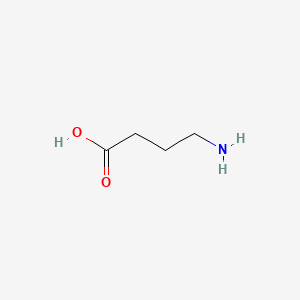| MeSH term | MeSH ID | Detail |
|---|---|---|
| Creutzfeldt-Jakob Syndrome | D007562 | 7 associated lipids |
| Liver Cirrhosis, Alcoholic | D008104 | 17 associated lipids |
| Hypocalcemia | D006996 | 12 associated lipids |
| Brain Ischemia | D002545 | 89 associated lipids |
| Ischemia | D007511 | 18 associated lipids |
| Epilepsy | D004827 | 35 associated lipids |
| Seizures | D012640 | 87 associated lipids |
| Nerve Degeneration | D009410 | 53 associated lipids |
| Hyperthyroidism | D006980 | 12 associated lipids |
| Hypertension | D006973 | 115 associated lipids |
| Ischemic Attack, Transient | D002546 | 42 associated lipids |
| Cerebrovascular Disorders | D002561 | 25 associated lipids |
| Movement Disorders | D009069 | 3 associated lipids |
| Protein-Energy Malnutrition | D011502 | 9 associated lipids |
| Cushing Syndrome | D003480 | 5 associated lipids |
| Granuloma, Foreign-Body | D015745 | 5 associated lipids |
| Hyperalgesia | D006930 | 42 associated lipids |
| Spinal Cord Injuries | D013119 | 34 associated lipids |
| Brain Damage, Chronic | D001925 | 6 associated lipids |
| Epilepsies, Partial | D004828 | 3 associated lipids |
4-aminobutyric acid
4-aminobutyric acid is a lipid of Fatty Acyls (FA) class. 4-aminobutyric acid is associated with abnormalities such as Epilepsy and Premenstrual syndrome. The involved functions are known as Binding (Molecular Function), neuron survival, Process, Uptake and physiological aspects. 4-aminobutyric acid often locates in Microglial, Neurofilament, Neuraxis, Brain region and Neurites. The associated genes with 4-aminobutyric acid are arginine methyl ester, SLC33A1 gene, NKS1 gene, P4HTM gene and ITSN2 gene. The related lipids are pregnenolone sulfate, pregnane-20-one, Pregnanes, Steroids and endogenous steroids.
Cross Reference
Introduction
To understand associated biological information of 4-aminobutyric acid, we collected biological information of abnormalities, associated pathways, cellular/molecular locations, biological functions, related genes/proteins, lipids and common seen animal/experimental models with organized paragraphs from literatures.
What diseases are associated with 4-aminobutyric acid?
4-aminobutyric acid is suspected in Premenstrual syndrome, Epilepsy and other diseases in descending order of the highest number of associated sentences.
Related references are mostly published in these journals:
| Disease | Cross reference | Weighted score | Related literature |
|---|
Possible diseases from mapped MeSH terms on references
We collected disease MeSH terms mapped to the references associated with 4-aminobutyric acid
PubChem Associated disorders and diseases
What pathways are associated with 4-aminobutyric acid
There are no associated biomedical information in the current reference collection.
PubChem Biomolecular Interactions and Pathways
Link to PubChem Biomolecular Interactions and PathwaysWhat cellular locations are associated with 4-aminobutyric acid?
Visualization in cellular structure
Associated locations are in red color. Not associated locations are in black.
Related references are published most in these journals:
| Location | Cross reference | Weighted score | Related literatures |
|---|
What functions are associated with 4-aminobutyric acid?
Related references are published most in these journals:
| Function | Cross reference | Weighted score | Related literatures |
|---|
What lipids are associated with 4-aminobutyric acid?
Related references are published most in these journals:
| Lipid concept | Cross reference | Weighted score | Related literatures |
|---|
What genes are associated with 4-aminobutyric acid?
Related references are published most in these journals:
| Gene | Cross reference | Weighted score | Related literatures |
|---|
What common seen animal models are associated with 4-aminobutyric acid?
There are no associated biomedical information in the current reference collection.
NCBI Entrez Crosslinks
All references with 4-aminobutyric acid
Download all related citations| Authors | Title | Published | Journal | PubMed Link |
|---|---|---|---|---|
| Xie M et al. | Gastroprotective effect of gamma-aminobutyric acid against ethanol-induced gastric mucosal injury. | 2017 | Chem. Biol. Interact. | pmid:28456544 |
| Malongane F et al. | The synergistic potential of various teas, herbs and therapeutic drugs in health improvement: a review. | 2017 | J. Sci. Food Agric. | pmid:28585285 |
| Daghestani MH et al. | The role of apitoxin in alleviating propionic acid-induced neurobehavioral impairments in rat pups: The expression pattern of Reelin gene. | 2017 | Biomed. Pharmacother. | pmid:28622594 |
| Khongrum J and Wattanathorn J | Laser Acupuncture at HT7 Improves the Cerebellar Disorders in Valproic Acid-Rat Model of Autism. | 2017 | J Acupunct Meridian Stud | pmid:28889839 |
| Lee NK and Paik HD | Bioconversion Using Lactic Acid Bacteria: Ginsenosides, GABA, and Phenolic Compounds. | 2017 | J. Microbiol. Biotechnol. | pmid:28297748 |
| Androsova G et al. | Comparative effectiveness of antiepileptic drugs in patients with mesial temporal lobe epilepsy with hippocampal sclerosis. | 2017 | Epilepsia | pmid:28857179 |
| Moradi-Afrapoli F et al. | HPLC-Based Activity Profiling for GABAA Receptor Modulators in Searsia pyroides Using a Larval Zebrafish Locomotor Assay. | 2017 | Planta Med. | pmid:28511229 |
| Nevitt SJ et al. | Antiepileptic drug monotherapy for epilepsy: a network meta-analysis of individual participant data. | 2017 | Cochrane Database Syst Rev | pmid:28661008 |
| Lin M et al. | Ergosteryl 2-naphthoate, An Ergosterol Derivative, Exhibits Antidepressant Effects Mediated by the Modification of GABAergic and Glutamatergic Systems. | 2017 | Molecules | pmid:28362353 |
| Cantaut-Belarif Y et al. | Microglia control the glycinergic but not the GABAergic synapses via prostaglandin E2 in the spinal cord. | 2017 | J. Cell Biol. | pmid:28716844 |
